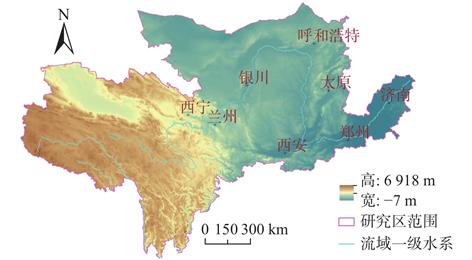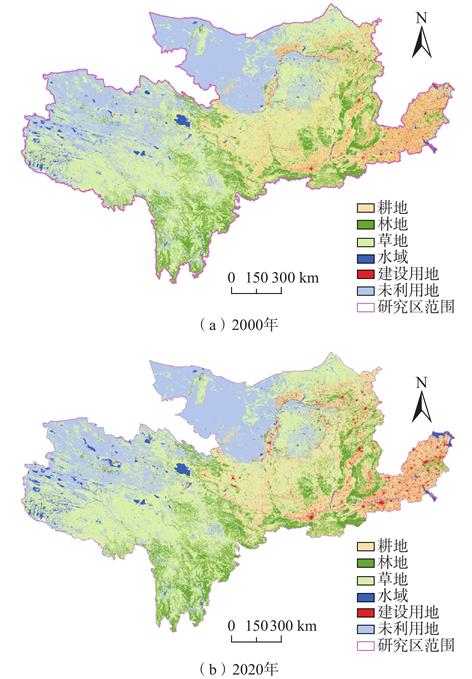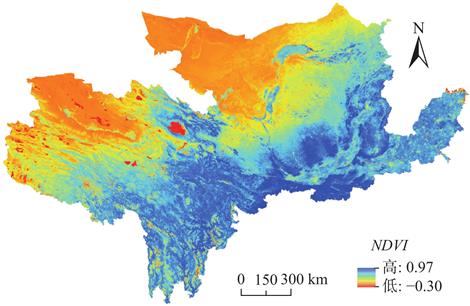| 黄河流域植被时空变化及其与土壤湿度的相关性分析 |
| |
| 引用本文: | 高萌萌, 李小磊, 杨楠, 王轶, 刘琼, 赵子鑫. 黄河流域植被时空变化及其与土壤湿度的相关性分析[J]. 水文地质工程地质, 2023, 50(3): 172-181. doi: 10.16030/j.cnki.issn.1000-3665.202108051 |
| |
| 作者姓名: | 高萌萌 李小磊 杨楠 王轶 刘琼 赵子鑫 |
| |
| 作者单位: | 中国地质环境监测院,北京 100081 |
| |
| 基金项目: | 中国地质调查局地质调查项目(DD20190506;DD20221726);国家自然科学基金项目(41702386) |
| |
| 摘 要: | 
黄河流域连接了青藏高原、黄土高原、内蒙古高原、华北平原,是我国重要的生态屏障。开展黄河流域植被时空变化及其与土壤湿度相关性分析,定量揭示土壤湿度对植被生长的影响,有利于干旱监测及生态环境保护。利用MOD13Q1 NDVI产品和全球陆面数据同化系统(global land data assimilation system,GLDAS)土壤湿度数据,采用Sen+Mann-Kendall趋势检验法和相关性分析法,分析了2000—2020年黄河流域植被时空变化特征及土地利用变化对植被生长的影响,并在流域尺度探索了生长季植被归一化植被指数(NDVI)与不同深度土壤湿度的相关性。结果表明:(1)研究区植被NDVI在空间上呈现“南高北低”的特征,沿黄河径流方向,上游右岸区域植被生长状况明显好于左岸,中下游两岸区域植被生长状况无明显差异。2000—2020年NDVI整体呈增加趋势,从2000年的0.356增加到2020年的0.435。
(2)不同用地类型的NDVI由大到小依次为:林地>耕地>草地>未利用地,不同季节NDVI由大到小依次为:夏季>秋季>春季>冬季。(3)研究区大部分区域植被生长状况处于改善和稳定的状态,小部分区域处于退化状态,退化区域的主要原因是草地退化、城市扩张导致耕地退化及耕地转为建设用地。(4)NDVI与不同深度的土壤湿度(0~10 cm、10~40 cm、40~100 cm、100~200 cm)整体呈正相关趋势,相关系数分别为0.535,0.647,0.681,0.619;不同土地利用类型的NDVI与不同深度土壤湿度的相关性有差异,耕地、草地和未利用地NDVI与10~40 cm处的土壤湿度正相关面积最大,而林地NDVI与40~100 cm处的土壤湿度正相关面积最大。相关研究成果可为黄河流域高质量发展提供科学依据。

|
| 关 键 词: | NDVI 土壤湿度 变化趋势 土地利用 黄河流域 |
| 收稿时间: | 2021-08-24 |
| 修稿时间: | 2021-11-04 |
|
| 点击此处可从《水文地质工程地质》浏览原始摘要信息 |
|
点击此处可从《水文地质工程地质》下载全文 |
|



